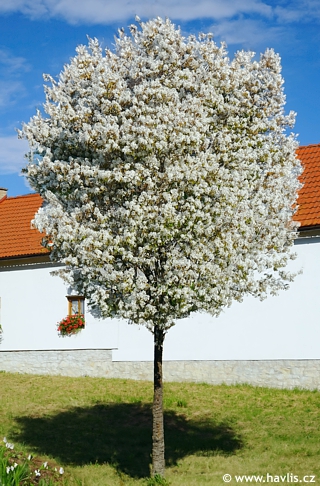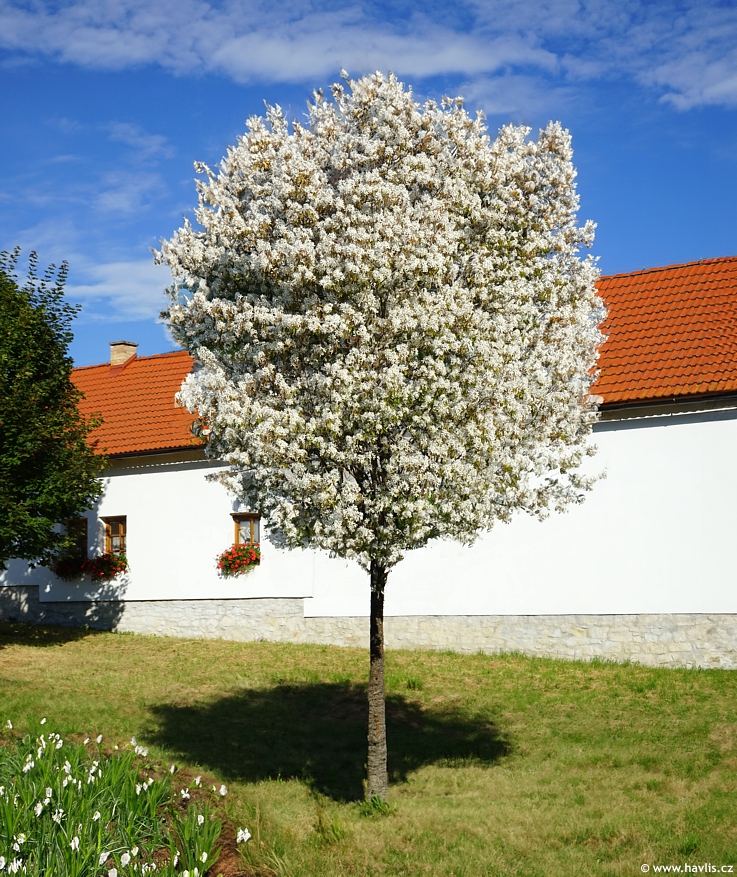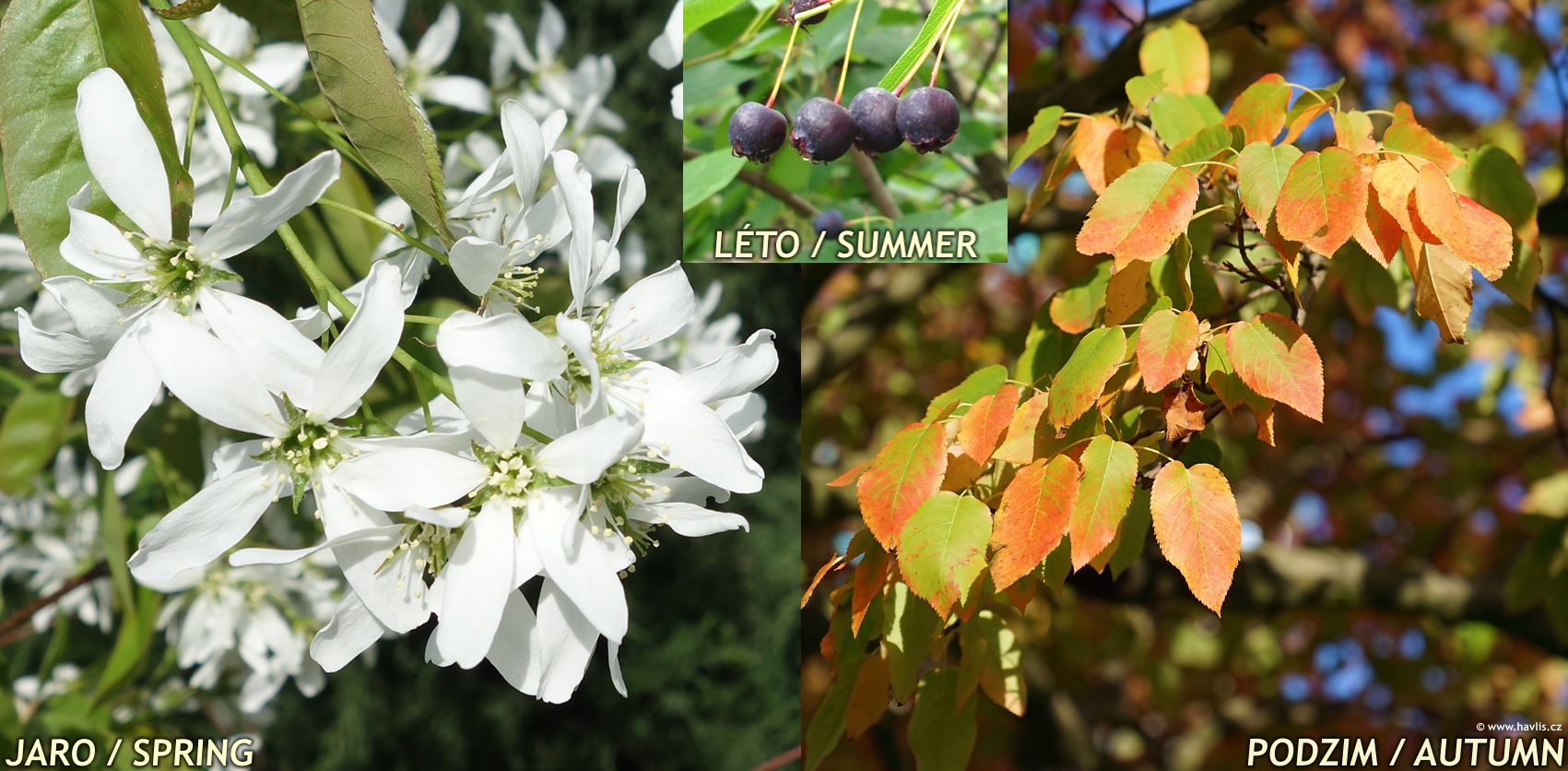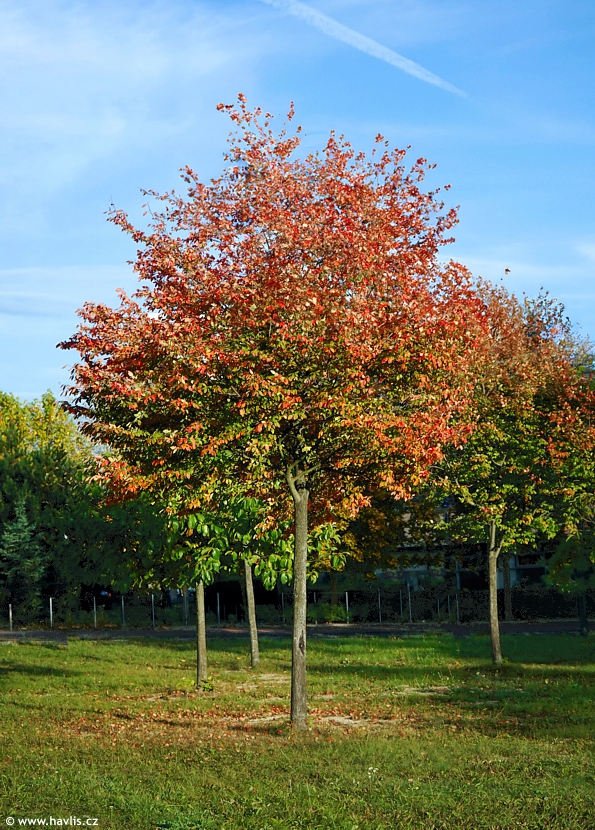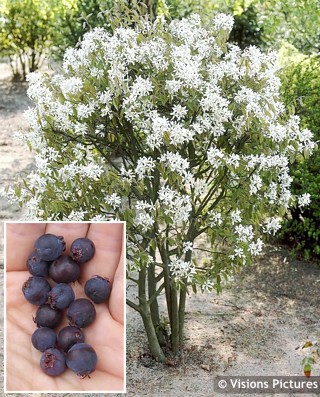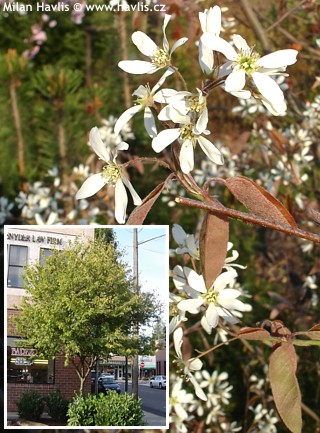Amelanchier canadensis 'OCTOBER FLAME' Canadian serviceberry, juneberry
size/type
small tree,taller shrub
usual height
3-5m
usual width
2-3m
leaves
deciduous broadleaf
colour of leaves
flowers
showy
colour of flowers
blooming time
April
location
full to partial sun
soil moisture requirements
evenly moist (dislikes drought)
USDA zone (lowest)
4 (down to -34°C)
winter protection
for zone 5+6

for zone 7

categorized
Amelanchier
Juneberry and serviceberry species are popular shrubs and trees that are celebrating their renaissance at the beginning of the new millennium. They belong to both ornamental plants as well as fruit trees which is why they are regaining interest. They are very easy to grow and can cope even with heavy clay without any need for additional fertilizing. Moreover, their root system is so dense that it helps protect soil from erosion.Canadian serviceberry is one of many native fruit trees that gave fruit to the original inhabitants of the American continent. Also, it is one of the parents of the well-known and popular hybrid Lamarck's juneberry which became extremely popular especially at the turn of the millennium.
Description of the plant:
October Flame is an American variety of Canadian serviceberry which was bred and introduced in 1993 by Edward Losely from the Herman Losely & Son nursery, i.e., the same person behind the highly successful fastigiate variety Rainbow Pillar. October Flame is often cited with a registered trademark but has never been granted a plant patent.In spring it is smothered with a profusion of small, fragrant, star-shaped, pure white flowers. They are followed by clusters of small, edible fruits - round berries similar to blueberries with tiny seeds inside. They ripen when their red color darkens to purple blue. They have excellent, sweet taste with a slightly spicy, blackthorn flavour and remain ripe on the bush/tree for quite a long time which increases the harvest period to almost a month. The only problem can be birds, who - once they spot them - can harvest them considerably quicker. The berries are valuable for their iron and copper content. The leaves are deciduous, narrowly oval, 3-4 cm long, flushed copper in spring, medium green in summer, and cheerfully coloured in autumn when they change to several shades of deep orange, scarlet red and burgundy.
This is a compact and much slower growing variety of serviceberry with dense and regular branching, which forms an almost impenetrable canopy already on young trees. In gardens it grows to about 4 meters in height and about half as wide, but in open spaces like parks or arboretums with unlimited root space it can grow some two meters more. The canopies are upright and slightly rounded when young, turning almost globular in maturity. October Flame serviceberry does not require pruning to look good. Still, it can be shaped and kept smaller by spring pruning before the buds emerge (losing flowers and fruit) or after harvest (slightly reducing flowering in the following year).
Most serviceberry species are undemanding trees in terms of cultivation or soil quality. Canadian serviceberry will be happy in almost any soil that is not too calcareous. It copes well with heavy soil and clay, but keep in mind that for planting you need to refine the soil in the planting pit so that it establishes well as quickly as possible. In acid soil it will exhibit a more attractive palette of autumn colours. It can never stand in water or mud. Newly planted standard trees (with a trunk) must be tied to a firm support for the first 3 years. Fully hardy to approx. -34 °C (USDA zone 4).
Last update 24-10-2023
QUICK PRICE OVERVIEW
CURRENTLY SOLD OUT
WANT TO TRY A SIMILAR PLANT?












